Winter: Backcountry Tips
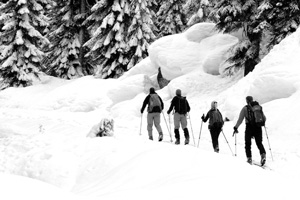
Enjoy winter’s epic backcountry—and live to tell about it
By Dane Doerflinger, Photos by Kaj Bune
Traveling in the backcountry during the winter is a very special experience because once the snow falls, your options for places to go increases dramatically. Snow travel on skis and snowshoes allow you to float over the snow and explore new terrain that looks completely different from this same trail you hiked last summer.
And let’s not forget these two other outstanding benefits of backcountry travel: few people and no bugs!
A seasoned backcountry traveler knows the season starts with the first snow storm of the year and goes until the spring snow melt, usually November through May. We do know there are some hard-cores who go out on snow every month of the year, but that’s a story for another time.
Backcountry gear essentials
We’ve compiled a list of items that will help to keep you safe and warm out in the snow. But you need to know how to use them. Try out all of these items in the backyard and out in the snow before you go. You will be glad you did if the time comes.
Snow shovel
This is one piece of gear that should be in every pack. It has multiple uses, from creating the coolest snow picnic table, to digging an emergency snow shelter to removing your buddy from avalanche debris. It can even double as a stove platform.
I recommend the aluminum shovels; they tend to chop through hard crust layers and avalanche debris better than the plastic ones. Aluminum shovel design has greatly improved in the last decade and so blade failure is pretty much a non-issue.
If you want to do your own shovel comparison, dig around in the snow that the plow has piled up and has refrozen (read simulated avalanche debris). It will become quickly apparent why aluminum is the material of choice for the professionals.
Avalanche beacon
Since I’ve mentioned avalanches—know that the beacon is really the only tool you have to recover a fully buried person in enough time to give them a chance at full recovery.
Sure, there are stories about the untrained dog on-scene that was able to find their master, or the lucky probe strike. The reality is the beacon is what is going to get the job done.
After you take your avalanche course you will learn, among many other things, that there is an exponential increase in brain damage relative to burial time. I practice with my beacon to try and get to the airway under four minutes.
The modern beacons are far better than their old counterparts. They use dual antennas and electronic improvements to give you a rough distance and direction allowing you to zero in faster on your target. They have also been designed to be more user-friendly under the duress of an avalanche emergency.
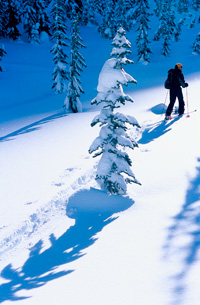
A backcountry traveler discovers the hidden corners of the Tatoosh Range in Mount Rainier National Park.
Probe poles
We used to only bring these out for body recovery missions on rescues. Then after an avalanche refresher course I was enlightened to learn how valuable they are for everyone to have a set, not just one person in the party.
Remember that pile of plowed snow that you dug through testing your new snow shovel? I bet you wouldn’t want to move a couple cubic meters of that stuff. Well, here is where the probe comes in.
After you have narrowed your search to the last square meter with your beacon, you do a quick probe to find your buddy, leave the probe in place, and then start digging (slightly downhill of the probe strike so you aren’t standing on them while you dig). That probe just shaved off what could be critical minutes from your recovery time.
I know these last three items are specific to winter backcountry travel and are on the expensive side. However, they are an investment that will last a lifetime and potentially save a life. A couple of days away from the lifts will pay for them.
Bivouac
Remember, the days are much shorter in the winter so I like to be prepared for the potential bivouac. If you get caught outdoors without shelter and need to spend the night, these ideas might save your life—or at least keep you warmer.
Insulating pad
I bring a closed cell foam pad big enough for two people to sit on. A bivouac is always better shared with friends and their body warmth. The pad is also great on those spring days when you’re kicking back after lunch waiting for the corn snow to get just right.
Shelter
Two large garbage bags will be waterproof and windproof. Use one for the legs and one over the head—and don’t forget the breathing hole. The Mylar bags work great as well. I prefer the actual bags to the plastic sheet as it’s much easier to stay in when it’s windy.
Heat source
Bring along something simple that can melt a little snow for drinking water. Backpacking stoves have gotten pretty small and fit into a small pot. Remember, the gas stoves don’t work as well in the cold. Shovel for platform, glad I brought that.
Backcountry tips
If you are going out into avalanche terrain you need to take an avalanche course. The way to survive an avalanche is to avoid getting involved in one. A sober statistic is that 20 percent of fatalities in avalanches are from serious trauma during the slide. No piece of gear is going to save you from that.
An avalanche course will also teach you about terrain selection and route-finding. Taking a map and compass class and then practicing your skills will make your trip much more enjoyable and safe.
Do this: Next time you are on an outdoor trip, pull out your map and compass and pay attention to your surroundings, follow the route you planned out at home, find landmarks and identify potential avalanche slopes. Avalanche awareness and map and compass knowledge are skills that need constant practice.
Dane Doerflinger of Seattle is a professional rafting guide and 30-year veteran of traveling in the backcountry.
If you like this post, you might also enjoy:
Trackbacks For This Post
1 Comment
-
[...] >> Winter: Backcountry Tips [...]

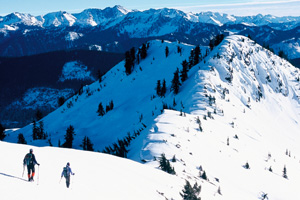
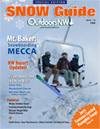
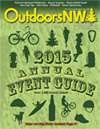
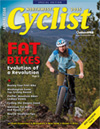
[...] >> Winter: Backcountry Tips [...]